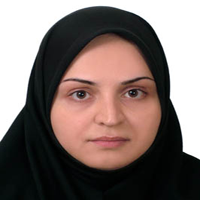Study of Dye Removal from Aqueous Solution Using Sawdust and Clay
Dyes and pigments are the major and important groups of chemical compounds with high amount of production and consumption amongst various environmental pollutants. For example, the annual imported amount of dye is over 7000 tons in Iran. Most of the dyes used in textile industries are considered either as inert or non-toxic, although some are not totally innocuous. The important fact is that most of them are made of carcinogenic chemicals that may be reformed as a result of metabolism. More than 50 percent of dyes consumed in different processes are discharged to wastewater, which in addition to changing the color of water, are preventing light penetration into the water and photosynthetic function that leads to destruction of aquatic ecosystem and some aquatic species. In recent years, increasing production and use of synthetic dyes, which have more complex structure and chemical stability as compared to natural dyes, more attention has been paid to their environmental pollution and importance of their treatment. Biological treatment is often the most economical alternative as compared to the physical and chemical treatment processes. But as most of dyes are hardly biodegradable, biological systems donot have capabilities in their removal. In expensive chemical processes, unexpected by- products and sludge are the main disadvantages. So, application of physical methods is preferred to control these kinds of pollutions. Different physical methods are also widely used, such as membrane–filtration processes and adsorption techniques. Adsorption is one of the most popular, flexible and effective methods that provides an attractive alternative for the treatment of colored water, especially if the sorbent is inexpensive and does not require an additional pre-treatment step before its application. It also does not result in the formation of harmful substances. Based on the aforementioned reasons, two adsorbents of sawdust and bentonite clay (absorbent aluminium phyllosilicate) were applied for the removal of cationic astrazon blue (F2RL) dye from wastewater regarding the two main factors of cost and availability in Iran, especially in the central provinces of the country. The parameters of pH, dye concentration and contact time were studied in this research. According to the study results, the optimum pH of 7 was found for the removal of dye for both sawdust and bentonite. Data analysis showed that increasing of the initial dye concentration resulted in the decreasing of removal efficiency. The maximum efficiency for the removal of dye from the solutions with the initial concentration of 25, 50 & 100 mg/L was 96.75, 91.11 & 79.26 percent for sawdust and 97.32, 96.78 & 94.62 percent for bentonite, respectively. The equilibrium time was 240 and 90 minutes for sawdust and bentonite, respectively. For the effect of adsorbent dosage on the removal of dye, experiments were carried out with two initial dye concentrations of 50 & 100 mg/L. By increasing of the adsorbent dosage, the maximum efficiency for the removal of dye from the solutions with the initial concentration of 50 and 100 mg/L increased from 53.46 to 97.06 percent and 49.76 to 96.83 percent, respectively, for sawdust, and from 90.78 to 99.64 and 86.44 to 99.46 percent, respectively, for bentonite clay. Analysis and calculation of separation factor (RL) of the result showed that adsorption of dye by sawdust and bentonite corresponds with Langmuir isotherm.
- حق عضویت دریافتی صرف حمایت از نشریات عضو و نگهداری، تکمیل و توسعه مگیران میشود.
- پرداخت حق اشتراک و دانلود مقالات اجازه بازنشر آن در سایر رسانههای چاپی و دیجیتال را به کاربر نمیدهد.


